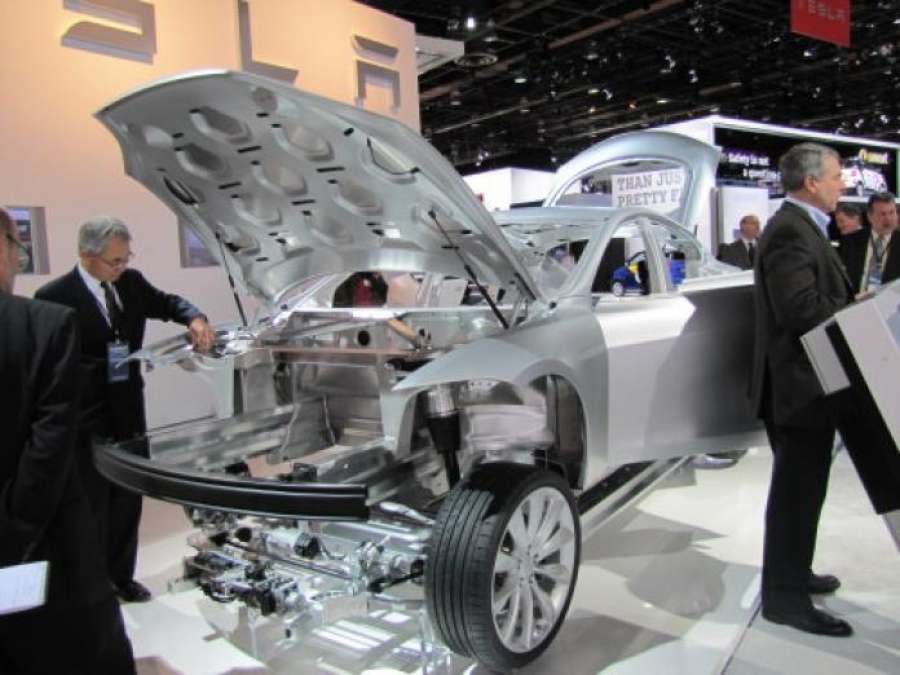Last year, the Model S Tesla was the main feature of 2011 NAIAS. This year, the company focused on presenting the other major element of the vehicle, an alpha-phase release of the body structure.
Made mostly of aluminum (or aluminium for my Brit and Aussie friends), only key structural black elements are made of steel; like the main beam that runs through the instrument panel, and the B-panel inners. The rest of the body is shiny aluminum.
Of course, not every aluminum part is a metal stamping, as with most unitized, steel-structures. For example, the cross bars and the rocker panel inner are made of extruded aluminum. The floor pans are made of stamped and formed aluminum sheet. Key corner areas are made of aluminum castings. So, it should be no surprise to see spot welds and flow welds to bring the dissimilar forms together.
If the body was made from steel, the weigh-in would be in the area of 450-500 kg. The aluminum body weighs-in at 300 kg, and that includes the enclosures like hood, doors and deck lid.
According to Rick Haas, Director of Body engineering for Tesla, "This is a state of the art body structure." Later he iterated the innovation was achievable, because of the "ground-up approach and a team of focused engineers" within a smaller skunk-works environment, as compared to the larger OEMs like Ford, Toyota or GM.
When I asked another Tesla engineer about volume capability, the answer was 20,000 units per year to start. Of course, within the world of high-volume auto manufacturing where 60 units per hour are norm, the Tesla volume is minimal. Still, the process is unique but scalable as quality is monitored.
I wrote once before that the company seems to have a minimalist design philosophy, but the goals are far from minimal. That still holds. Aside from multiple use of parts, each component contributes to the minimalist-weight approach, a crucial aspect to any EV to maximize mileage range. The goal, moreover, is to maximize energy use, efficiency and performance.
The chassis is extruded aluminum to create a lightweight but stiff structure. Front and rear crumple zones are an integral part of the design. It is destined to meet the FMVSS tests, despite light-weight materials and energy absorption having tradeoffs. Hass mentioned to expect a 5 Star NHTSA Safety rating.
__________________________________
Additional Reading:
High-efficiency small cars shine at 2011 Detroit Auto Show
Electric Avenue lights up future at 2011 Detroit Auto Show





